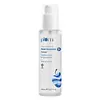What's inside
What's inside
 Key Ingredients
Key Ingredients

 Benefits
Benefits

 Concerns
Concerns

No concerns
 Ingredients Side-by-side
Ingredients Side-by-side

Water
Skin ConditioningGlycolic Acid
BufferingTriethanolamine
BufferingGlycerin
HumectantSodium Hyaluronate
HumectantHordeum Vulgare Seed Extract
Skin ConditioningAloe Barbadensis Leaf Juice
Skin ConditioningPhenoxyethanol
PreservativeEthylhexylglycerin
Skin ConditioningAllantoin
Skin ConditioningHydroxyethylcellulose
Emulsion StabilisingLaminaria Digitata Extract
Skin ProtectingOlea Europaea Leaf Extract
PerfumingXylitylglucoside
HumectantAnhydroxylitol
HumectantXylitol
HumectantWater
Skin ConditioningNiacinamide
SmoothingPentylene Glycol
Skin ConditioningOryza Sativa Extract
AbsorbentRice Ferment Filtrate
Skin ConditioningButylene Glycol
HumectantRosa Damascena Flower Water
MaskingMethyl Gluceth-20
HumectantSorbitol
HumectantCyclodextrin
AbsorbentAvena Sativa Kernel Extract
AbrasiveHydroxyethyl Acrylate/Sodium Acryloyldimethyl Taurate Copolymer
Emulsion StabilisingXylitylglucoside
HumectantPanthenol
Skin ConditioningSodium Gluconate
Skin ConditioningAnhydroxylitol
HumectantXylitol
HumectantPhenoxyethanol
PreservativeEthylhexylglycerin
Skin ConditioningPEG-40 Hydrogenated Castor Oil
EmulsifyingWater, Niacinamide, Pentylene Glycol, Oryza Sativa Extract, Rice Ferment Filtrate, Butylene Glycol, Rosa Damascena Flower Water, Methyl Gluceth-20, Sorbitol, Cyclodextrin, Avena Sativa Kernel Extract, Hydroxyethyl Acrylate/Sodium Acryloyldimethyl Taurate Copolymer, Xylitylglucoside, Panthenol, Sodium Gluconate, Anhydroxylitol, Xylitol, Phenoxyethanol, Ethylhexylglycerin, PEG-40 Hydrogenated Castor Oil
Ingredients Explained
These ingredients are found in both products.
Ingredients higher up in an ingredient list are typically present in a larger amount.
This ingredient is created from dehydrating xylitol in acidic conditions. Xylitol is a famous sugar and humectant.
Much like its predecessor, anhydroxylitol is a humectant. Humectants attract and hold water to moisturize the skin.
This ingredient is most commonly found in a popular trio called Aquaxyl. Aquaxyl is made up of anhydroxylitol (24 - 34%), xylitylglucoside (35 - 50%), and xylitol (5 - 15%).
According to a manufacturer, Aquaxyl is known for a 3-D hydration concept and an anti-dehydration shield to reinforce the outer layer of skin.
This ingredient is often derived from plants such as wood and sugarcane.
Learn more about AnhydroxylitolEthylhexylglycerin (we can't pronounce this either) is commonly used as a preservative and skin softener. It is derived from glyceryl.
You might see Ethylhexylglycerin often paired with other preservatives such as phenoxyethanol. Ethylhexylglycerin has been found to increase the effectiveness of these other preservatives.
Phenoxyethanol is a preservative that has germicide, antimicrobial, and aromatic properties. Studies show that phenoxyethanol can prevent microbial growth. By itself, it has a scent that is similar to that of a rose.
It's often used in formulations along with Caprylyl Glycol to preserve the shelf life of products.
Water. It's the most common cosmetic ingredient of all. You'll usually see it at the top of ingredient lists, meaning that it makes up the largest part of the product.
So why is it so popular? Water most often acts as a solvent - this means that it helps dissolve other ingredients into the formulation.
You'll also recognize water as that liquid we all need to stay alive. If you see this, drink a glass of water. Stay hydrated!
Learn more about WaterXylitol is a humectant and prebiotic. It can help with dry skin.
In studies, xylitol has been shown to improve dry skin. It decreased transepidermal water loss, or when water passes through the skin and evaporates. Xylitol also showed to help improve the biomechanical properties of the skin barrier.
The prebiotic property of xylitol may also help reinforce our skin's natural microbiome. Having a healthy microbiome prevents infection by bad bacteria and helps with hydration.
As a humectant, Xylitol helps draw moisture from both the air and from deeper skin layers. This helps keep skin hydrated.
Xylitol is a sugar alcohol and commonly used as a sugar substitute. It is naturally occurring in plants such as strawberries and pumpkin.
Learn more about XylitolXylitylglucoside is created from xylitol and glucose, two humectants.
Not surprisingly, this ingredient is also a humectant. It attracts and holds water in your skin, helping to maintain hydration.
This ingredient is most commonly found in a popular trio called Aquaxyl. Aquaxyl is made up of anhydroxylitol(24 - 34%), xylitylglucoside (35 - 50%), and xylitol (5 - 15%).
According to a manufacturer, Aquaxyl is known for a 3-D hydration concept and an anti-dehydration shield to reinforce the outer layer of skin.
Learn more about Xylitylglucoside